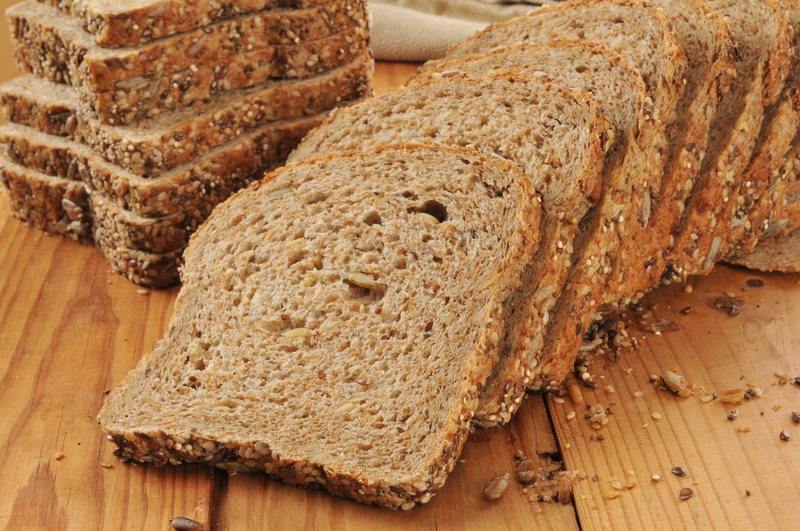Natural Remedies for Mould on Window Sills
Posted on 04/09/2025
Natural Remedies for Mould on Window Sills: A Comprehensive Guide
Mould on window sills is a common problem, especially in damp climates or poorly ventilated rooms. Beyond being simply unsightly, mould spores can pose health risks such as allergies, respiratory issues, and skin irritation. However, you don't have to resort to harsh chemicals to tackle this issue. In this guide, you will discover effective natural remedies for mould on window sills, learn about the underlying causes, and pick up expert tips for prevention and maintenance.

What Causes Mould to Form on Window Sills?
Before we dive into natural ways to clean mould from window sills, it's important to understand what causes mould growth in these areas. The most common factors include:
- Excess moisture due to condensation on glass panes
- Poor ventilation in rooms, particularly during winter months
- Leaky windows or frames allowing water intrusion
- Organic material like dust, which provides food for mould spores
By addressing these root causes alongside using *natural mould removal techniques*, you'll get more effective and lasting results.
Why Opt for Natural Remedies?
Using natural remedies for mould removal on window sills offers several benefits:
- Safe for families and pets: No exposure to harsh chemicals
- Environmentally friendly: Less environmental impact than chemical cleaners
- Cost-effective: Most solutions use items already available at home
- Prevents damage: Gentle on window sills, paint, and seals
The Most Effective Natural Remedies for Window Sill Mould
1. White Vinegar - A Powerful Antifungal Solution
White vinegar is one of the best natural mould killers for window sills. Its mild acidity disrupts mould growth and eliminates spores.
- Pour undiluted white vinegar into a spray bottle.
- Spray the affected areas thoroughly, especially on cracks and corners.
- Let it sit for at least an hour to allow the vinegar to penetrate.
- Use a soft brush or microfiber cloth to scrub the mould away.
- Wipe the area clean with a damp cloth and allow to air dry.
For stubborn patches, repeat the process or leave the vinegar overnight. The residual scent will dissipate quickly.
2. Baking Soda - A Mild and Natural Abrasive
- Mix a tablespoon of baking soda with two cups of water in a spray bottle.
- Shake the bottle thoroughly to dissolve the powder.
- Spray the mixture over the mould-affected window sill.
- Let it sit for a few minutes.
- Scrub with a brush or sponge, focusing on crevices.
- Wipe clean with a damp cloth.
For extra effectiveness, sprinkle dry baking soda directly onto persistent spots before cleaning.
3. Tea Tree Oil - Natural Antimicrobial Agent
Tea tree oil is another excellent natural remedy for black mould on window sills. Its potent antifungal properties kill mould on contact.
- Mix one teaspoon of tea tree oil with a cup of water in a small spray bottle.
- Spray generously over the mould.
- Leave the solution for at least one hour - no need to rinse!
- Wipe the area with a clean cloth.
*Note: Tea tree oil has a strong scent, so ventilate the room after use. Avoid direct contact with skin if you're sensitive to essential oils.*
4. Hydrogen Peroxide - Natural Cleaning Power
Hydrogen peroxide is often used as a natural alternative to bleach for window sill mould. It disinfects, removes stains, and is kinder to the environment.
- Pour 3% hydrogen peroxide directly onto the mould or spray it using a bottle.
- Allow the solution to bubble and work for 15 minutes.
- Scrub with a soft brush.
- Wipe the area thoroughly with a damp cloth.
Always check a small, inconspicuous area first, as hydrogen peroxide can lighten the colour of some paints.
5. Lemon Juice - Fresh and Effective
Lemon juice's natural acidity makes it a safe home remedy for mould on window sills. Plus, it leaves a fresh citrus aroma.
- Squeeze the juice of one or two lemons directly onto the affected area, or use a spray bottle for larger areas.
- Let the juice sit for five to ten minutes.
- Scrub the window sill with a brush.
- Wipe away the residue with a clean, damp cloth.
*For stubborn mould, combine lemon juice with baking soda to create a natural scrubbing paste.*
How to Prevent Mould from Returning to Window Sills
Cleaning is only half the battle; prevention is key to keeping mould growth on window sills at bay. Here are the most effective strategies:
-
Improve ventilation:
Open windows regularly or use extractor fans to reduce humidity. -
Use a dehumidifier:
Especially in bathrooms, kitchens, and bedrooms. Aim for indoor humidity levels below 60%. -
Regular cleaning:
Dust and clean window sills weekly to remove mould spores before they take hold. -
Seal leaks:
Repair window caulking and check seals to prevent water intrusion. -
Insulate windows:
Double glazing and proper insulation minimize condensation buildup.
Bonus Tip: Use Desiccants
Place silica gel packets or natural desiccants (like activated charcoal) near window sills to absorb moisture, especially during wet seasons.
Common Mistakes to Avoid When Cleaning Window Sill Mould Naturally
While natural mould removal methods are safer and eco-friendly, watch out for these common pitfalls:
- Ignoring protective gear: Even natural products can irritate eyes or skin. Wear gloves and open windows while cleaning.
- Not drying thoroughly: Leaving moisture behind invites mould to return quickly. Always dry windows and sills after cleaning.
- Using metal brushes: These can scratch and damage wood or painted surfaces. Use soft-bristled brushes or microfiber cloths instead.
- Mixing remedies: Some natural cleaners (like vinegar and hydrogen peroxide) should not be mixed, as they can create irritating fumes or cancel out each other's effectiveness.
Why Does Mould Keep Coming Back on My Window Sills?
If you notice persistent mould on your window sills despite repeated cleaning, it's essential to address underlying issues:
- Persistent leaks: Check window frames, sashes, and nearby walls for hidden water ingress.
- Poor insulation: Single-pane or poorly insulated windows are prone to condensation, feeding mould growth.
- Excessive indoor humidity: Routine indoor activities (cooking, drying clothes) without ventilation cause elevated moisture levels.
In such cases, combine natural remedies for cleaning with building repairs and better air circulation for long-term success.
Are There Home Remedies That Don't Work?
Not all folk remedies are effective for natural window sill mould removal. For example, simply wiping with water or soap often leaves spores behind. Some common mistakes include:
- Using bleach: While effective, bleach is harsh and can release toxic fumes. It also doesn't always penetrate porous surfaces, which means mould can return.
- Over-relying on essential oils: While fragrant, most essential oils (besides tea tree oil) are not proven mould killers and work best as a supplement to cleaning.
- Dry brushing: This disperses spores into the air, which can make matters worse rather than better.
Professional vs. Natural Mould Removal: When to Seek Help
Natural remedies for window sill mould work well for small, localized outbreaks. However, consider professional intervention if you experience:
- Extensive spreading: Mould covers a large surface or recurs rapidly.
- Health symptoms: Persistent health problems like coughing, sneezing, or skin irritations.
- Structural issues: Evidence of widespread moisture or wood rot around windows and walls.
In these cases, experts can assess underlying moisture problems and perform deep removal to restore your home to a safe, clean condition.

Frequently Asked Questions About Natural Mould Removal on Window Sills
Is it safe to use vinegar and baking soda together on mould?
Yes, but not simultaneously. Vinegar is acidic and baking soda is alkaline, so they neutralize each other's cleaning power if mixed. Clean first with vinegar, rinse, then finish with baking soda for best results.
How often should I clean window sills to prevent mould?
Aim for weekly dusting and monthly deep cleaning, especially in rooms prone to damp or condensation.
Can natural remedies remove stains from mould?
Vinegar, baking soda, and hydrogen peroxide can remove many mould stains. However, some stubborn discoloration may require gentle sanding and repainting.
Should I replace wooden sills with plastic or metal to prevent mould?
While non-porous materials like PVC or aluminum are less likely to support mould, problems can persist if high humidity or leaks are not addressed. The key is controlling moisture regardless of window sill material.
Conclusion: Enjoy Cleaner, Healthier Window Sills Naturally
Dealing with mould on window sills naturally is practical, cost-effective, and safer for your family and the environment. By using everyday items such as vinegar, baking soda, tea tree oil, hydrogen peroxide, and lemon juice, you can tackle most outbreaks with confidence.
Pair these natural solutions with good ventilation, regular cleaning, and moisture control for long-term results. If you encounter persistent problems, don't hesitate to seek professional help for a comprehensive solution.
With these *natural mould remedies for window sills*, you can enjoy a healthier, fresher home environment all year round.



